Many dealers argue there is no money in fleet and only get involved because car manufacturers tell them to. It’s a world of heavy discounting, and high service levels make it labour-intensive. But it also happens to be 50% of the UK car market.
Many dealers argue there is no money in fleet and only get involved because car manufacturers tell them to. It’s a world of heavy discounting, and high service levels make it labour-intensive. But it also happens to be 50% of the UK car market.
Many dealers argue there is no money in fleet and only get involved because car manufacturers tell them to. It’s a world of heavy discounting, and high service levels make it labour-intensive. But it also happens to be 50% of the UK car market.
Many dealers argue there is no money in fleet and only get involved because car manufacturers tell them to. It’s a world of heavy discounting, and high service levels make it labour-intensive. But it also happens to be 50% of the UK car market.
|
|
|||
BEST FLEET DEALERSHIP |
|||
|
AM Awards auditor BDO concluded: “Holdcroft is a deserving winner of the Best Fleet Dealership Award because it has taken a strategic view to allow its fleet business to stand alone, separate from its dealerships, allowing it to invest and focus on service quality as well as new ways of working from an IT perspective. |
|||
Malcolm Pearson, fleet director at Holdcroft Group, the winner of Best Fleet Dealership at the AM Awards 2014 (see panel, right), was attracted to the business four years ago to build a dedicated fleet operation from the ground up.
The desire to build a fleet operation was driven by Darren Holdcroft, the Staffordshire dealer group’s managing director, who believes in the company vision that it should service its local customers – and that includes businesses.
Pearson told AM: “The key to making money from fleet is putting the effort in that it needs and supporting it with processes to make it work.”
Holdcroft has come up with a structure of working that has led to a 100% customer retention rate.
Over the past four years, the team has grown from five people to 17, with further expansion planned this year.
“We’ve been investing in the poor times,” said Pearson. “There have been other companies I’ve worked for where they say the boat has to creak before you get some more paddles. We have been focusing on getting a good operation going and only going to market when we’re ready.”
The business needed investment and had to go through several changes to prepare it for courting fleet customers.
Starting fleet from scratch
AM asked Pearson what advice he would give to dealers looking to take fleet more seriously.
“I’m a big believer in separating the control of fleet from a retail sales manager or dealer principal,” he said.
“Most don’t have a sufficient knowledge of the fleet industry to do the best job possible. You have to invest in the proper resource, you can’t afford to skimp at it.
“Employing one person won’t cut it. That person might sell 10 vehicles, but he’s then got to administer and deliver those cars. Customer service will always be affected.
“If you have the right support and the right process, you can let sales people focus on selling and not delivering and administering.”
Choosing the right tools for fleet
Pearson’s first step was making sure the fleet team had the right software and training to help them offer the right service level for fleet customers. This included IT, infrastructure and office administration systems.
Holdcroft uses ADP Kerridge for its dealer management system (DMS) and uses Ebbon-Dacs’s Leaselink software when working with leasing companies.
“A lot of dealer groups will act a bit like a call centre when they have a centralised function,” said Pearson.
“They’ll take an enquiry and then have to go to someone else within the dealer group to get an answer to a question and then go back to the customer.
“We trained our people so they’re not middlemen. If someone calls or emails, we can give them the answer straight away.” Pearson believes this can save hours in lost time and inefficiencies each day.
Leasing companies gauge dealers on how quickly they respond to enquiries and most of those that deal with Holdcroft have a service level agreement to respond within an hour.
Its average response time before Pearson joined was more than three hours, because the fleet team had to ring dealerships to get the right information. The average response time now is 14 minutes.
One simple measure Pearson put in place was a group email. Everyone on the team has access to it and if a team member is on holiday or ill, the enquiry is still picked up.
[page-break]Choosing the right people for fleet
Once the correct IT systems were in place, Pearson could judge to see if the team was right.
“We didn’t have the right people and we had to go through a recruitment process,” he said. It took longer than expected.
“It took us two years to get everything in place to start building. I didn’t want to go out to new customers if we couldn’t deliver the right service. A lot of dealerships go wrong when they go after business before the infrastructure is ready.”
The aim was to recruit dealer staff with fleet experience and this proved to be difficult in the Stoke area. Holdcroft took on staff with a wide range of experience and then trained them up with fleet knowledge.
It didn’t take long to train processes, but the comprehension of what fleet is took longer for staff that had never worked on that side of the business before.
Holdcroft employs its own HGV drivers to deliver company cars around the country. Pearson focused on this area because he realised that the handover process was an area customers pay particular attention to when evaluating the level of service they’ve received.
All Holdcroft drivers have branded uniforms, they know who they’re delivering to, they know what they’re delivering and they are trained and prepared to answer any questions a company car driver may have about the product.
“A lot of dealers outsource the delivery of their fleet vehicles and in my experience it is something customers complain about,” said Pearson.
“If you have a driver who is outsourced, he never gets the brand knowledge. Holdcroft has 10 franchises so it is difficult for them to keep up with all the product information, but we put them on the same sales training for new products as our sales executives.”
Drivers can explain the controls in a car – sat-nav, Bluetooth etc – they do not just “chuck the keys”, said Pearson.
He doesn’t believe in a ‘two-tier service’. There are differences in pricing depending on the size of the fleet orders companies are making, but Pearson makes it clear that when it comes to deliveries, there is one level of service and it is the best that Holdcroft can deliver. It doesn’t matter if it is a small business ordering one car or a company ordering 20.
[page-break]Getting all sides of the business to act as a team
Holdcroft has a £1.5 million purpose-built facility with space for 500 vehicles on site. There is row of ramps dedicated to fleet business, an MoT bay, which is shared with the retail side of the business, and a logistics office controlling the operation.
Cars are delivered to the Holdcroft Fleet site, they are put through a pre-delivery inspection (PDI), valeted and then put on the trucks. Once a car is at the Holdcroft site, it doesn’t leave until it is on its way to a fleet customer. It reduces the amount of times a car needs to be moved, which also reduces the chances for cars to get any accidental damage.
“We’ve had to get everyone to think of themselves as one team,” said Pearson. “Previously, as is inherent at most dealerships, you had an us and them mentality, with a split in the dealerships as to whether to do the retail service work before the PDI work.”
There’s no such split at Holdcroft Fleet, with all departments focused on the corporate side of the business.
“Most fleet people that work in a dealership feel a bit isolated and outnumbered. Other dealer staff don’t understand what they do, but having like-minded people all together, we get a better result.”
Part of the attraction for Holdcroft’s fleet customers is they can come down to the site and see the scale it works on.
Many other dealer groups would not invest that sort of money on a solus fleet facility, so why did Holdcroft?
“We have a belief that the fleet business should be managed away from the main dealership,” said Pearson.
“We need people in the dealerships to deal with fleet customers that walk in, but most dealer principals don’t understand the fleet process.
“We recognised that. Our people in the dealerships are focused on retail, service, parts and Motability, and fleet is a specialised area of the business. It accounts for 50% of the volume for most of our franchises, so it warrants its own department and support network.”
[page-break]Some dealerships may only have one person making fleet sales, moving cars, fuelling cars and delivering them.
Holdcroft Fleet has a dedicated fleet sales team who are out on the road visiting businesses, plus a separate delivery team and logistics team.
“It might look heavier in terms of cost due to head count, but we have minimised cost this way by compartmentalising the fleet operation away from the retail side of the business,” said Pearson.
How delivering cars in bulk has saved money
Holdcroft took the decision to minimise the amount of separate trips it was making with delivery drivers in individual vehicles by making sure every delivery was from a lorry. It meant a higher up-front cost by purchasing the lorries to make the deliveries, but Pearson worked out that it would be more efficient.
Some dealers will employ a driver to drive the individual car to a fleet customer and then let them make their own way back. Using lorries also meant the hard work the valeting team put into cleaning the cars is not undone by driving them individually to the customer.
“We’re delivering in bulk, but it’s a personal service. It costs more in fuel, but cost per unit is driven down,” said Pearson.
This method reduced delivery costs by £56,000 on the equivalent number of deliveries and the efficiencies made within the business reduced costs by 44% despite an increase in head count and salaries.
“We have to compete with everyone else on fleet discounts. Where we try to differentiate ourselves is with the service to the customer and efficiency,” said Pearson.
[page-break]“We get scored by the vast majority of our customers on the handover aspect. All the manufacturers and leasing companies have a copy of the delivery notes. The higher the scores we get, the more business we secure.”
Hi-tech car tracking makes delivery more efficient
Holdcroft Fleet’s office in Stoke, sitting above the PDI ramps and valeting bays, is full of flat-screen televisions with maps and little lorry icons moving across the UK.
Staff have wide-screen computer monitors so they can view two tasks on the screen at once to maximise efficiency.
Pearson believes a lot of dealers are good at taking sales orders, customer interaction, pricing and availability. However, where most fall down is with delivery.
The logistics team can communicate with drivers, they can see where they are at all times, where they have stopped, where they are hitting traffic and when they have finished a delivery. If a driver is going to be late, Holdcroft can see on the map in real time and call customers to keep them updated.
“People understand that sometimes you can be delayed in traffic, but you have to keep them updated. If they know you’re going to be an hour late, they can get on with doing something else,” said Pearson.
“There’s nothing worse than waiting and not knowing what is going on.”
Drivers will know the order of their deliveries for the following day and customers will be informed when they are an hour away.
Managing the vehicle manufacturer relationships
The majority of Holdcroft’s fleet business is through its group franchises, Nissan, Renault, Honda, Hyundai, Mitsubishi and Mazda. There are also volumes from its all-makes brokerage service.
“I feel like the work we have invested in the last five years will start to pay dividends in the next few years as our franchises continue to strengthen in the fleet market,” said Pearson.
[page-break]One of the most difficult things with running a multi-franchise fleet operation is managing the manufacturer’s expectations for when a model will be registered and when a leasing company wants their driver to get the car.
It takes a huge amount of effort and understanding from Holdcroft Fleet’s team to manage expectations correctly.
Manufacturers will often want cars registered to hit a specific target for a month and it becomes a juggling act between that requirement, holding the stock and delivering it at the right time for the company car driver. Holdcroft Fleet has to make sure those expectations and dates all line up.
“You’ve got to have a good process with forecasting and setting expectations when you take the sales order,” said Pearson.
“Most manufacturer systems will give you the opportunity to specify when the customer will actually need the vehicle. You might be able to get it in six weeks, but customers are ordering early now because they know there are long lead times on new models.
“We have people ordering now that don’t want the cars until September. Manufacturers see the order has come through so there is an expectation that it should be registered. We have to set the expectation that it can’t be registered until September. It comes down to good communication.”
Running fleet operations as a non-profit centre
One of Holdcroft’s more radical ideas is running its fleet operation as a non-profit centre. The focus is solely on the customer and the profit from each fleet sale is portioned out to the dealer that made the sale.
Holdcroft manages the administration and delivery of the vehicle, while the dealerships get the profit. Pearson charges dealerships an internal administration fee on a per unit basis, but this is just to cover costs for the operation. The dealerships get the registrations and the bonuses that come with them.
[page-break]Pearson runs the business with volume in mind and making sure delivery lorries are full. The business is helped by the fact it represents so many different franchises, which means it can make sure it has full lorries each time it sends one out on the road.
Some fleet specialists sit within dealerships throughout the Holdcroft group and Pearson also has a team of fleet sales specialists at the specialist Holdcroft Fleet site. Holdcroft Fleet deals with leasing companies and major corporates and there is also another team solely focused on local businesses and selling multi-franchise.
Holdcroft Fleet exceeded its sales targets for local business by 140% in 2013, with 480 orders. There have already been 250 orders in Q1 this year.
“We’re now on track to put nearly 1,000 extra units into the group from small business fleet sales this year by having this facility here,” said Pearson.
Holdcroft sells its own service plans for small business owners that are looking to manage their monthly budgets, but the servicing side of the business is left to the retail arm at the dealerships.
“The retail dealerships have the specialist personnel for servicing on site, so they handle the fleet servicing work and we then link and communicate with them,” said Pearson.
Holdcroft’s plans for future growth
The fleet market in the UK is growing and replacement cycles are shortening again, with Holdcroft seeing local fleet customers looking for two-year contracts, rather than three or four.
[page-break]Pearson is looking to increase fleet volumes by 30% over the next 12 months, from 2,500 to 3,500 in 2014. The long-term goal is to get fleet volumes to 5,000 units. There is the capacity to push to 6,500 units.
“We have planned to be able to handle 6,500 units and keep the service levels we have now,” he said.
Brokerage service
Holdcroft operates its own online brokerage service. It competes directly with online brokers and gives customers peace of mind when they know that it’s an operation with proper facilities rather than a ‘bedroom broker’.
A USP for local businesses is that Holdcroft will source and sell any make or model, whether Holdcroft as a group has it or not.
“Unlike a traditional online broker, if they want to pay cash for it, we can facilitate that,” said Pearson.
“We will try and service those local businesses and then we sell them the service work to get them into the Holdcroft family.”
Some dealerships will have a brokerage for contract hire business, but they don’t sell them for cash.
“Our motto with the brokerage business is ‘whatever they want to buy, however they want to pay for it’,” said Pearson.
“We sell Audis, VWs, Land Rovers, Ford Transits, Mercedes-Benz Vitos.”
Electric vehicles and plug-in hybrids
The industry looks to fleets to lead the way with the purchase of electric vehicles and plug-in hybrids and the Government has just confirmed an additional £500 million in funds to encourage customers into plug-in cars.
Pearson believes customers are starting to come around to plug-in cars: “We are seeing more interest. Over the last two years, we haven’t seen much activity. But the enquiries are increasing.
[page-break]“The difficulty we have had is getting hold of the demonstrators.
“Customers are more aware and accepting of discussing plug-in cars. It’s becoming more high profile.”
Profile: Malcolm Pearson
Pearson started in the industry as a car salesman (following a stint as a nightclub manager). The 1980s recession brought a change in sales style, forcing executives at the time to get out knocking on doors and drum up business.
Pearson found he liked that way of working and it translated well to fleet, getting out of the showroom and talking to local business owners about replacing their cars.
He worked for a Mercedes-Benz dealership and then for Stratstone Mayfair with Jaguar in London. Pendragon acquired Stratstone soon after he joined, which resulted in him heading Stratstone’s business teams for Jaguar.
That led to a nationwide role for Pendragon’s Jaguar franchise. A promotion to Pendragon’s head office in Nottingham followed, with Pearson responsible for all business sales across the group.
“My career path gave me a very good insight into how lots of different dealerships work.
“It gave me experience in working with small businesses and larger corporates, as well as many different manufacturer brands.”
Login to continue reading
Or register with AM-online to keep up to date with the latest UK automotive retail industry news and insight.






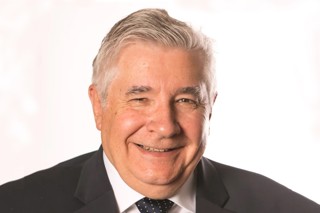

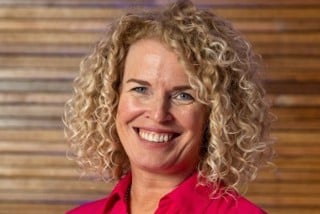
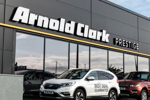






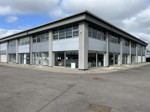

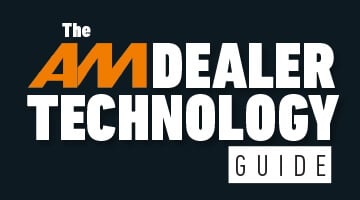
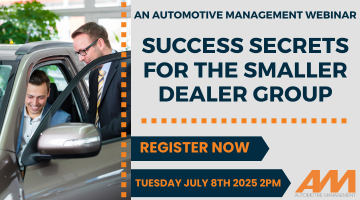
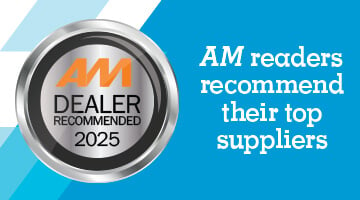
Login to comment
Comments
No comments have been made yet.